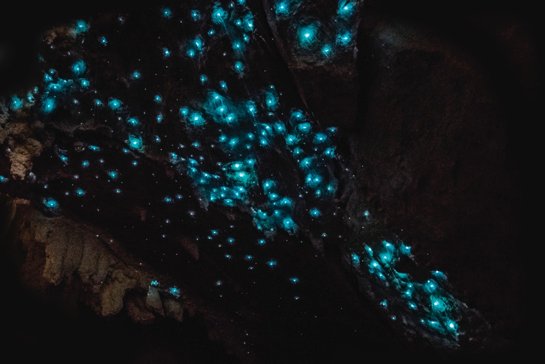
Imagine the world of glow worms like a cozy bubble. This bubble has a temperature, moisture, and specific nutrients that make it just right for them. If the climate changes, it can be like popping that bubble, leaving these fascinating creatures struggling to survive. In this article, we’re diving deep into how climate shapes the habitats of glow worms, exploring everything from temperature preferences to the importance of humidity. So, grab your favorite drink, and let’s illuminate the wonders of glow worms together!
The Basics of Glow Worms
Let’s start by getting to know our glowing friends a little better. Glow worms aren’t actually worms at all. They are the larvae of certain beetles, most notably the fungus gnat. These larvae emit light to attract prey, typically small insects, to their sticky silk threads. This bioluminescence is not just for show; it’s a survival strategy. Now, how does climate fit into this?
Glow worms thrive in specific environments that provide the right mix of moisture and temperature. They prefer areas that are damp, dark, and slightly sheltered. Think of a mossy cave or a humid forest floor—perfect spots for these larvae to set up their glowing traps. But if the climate shifts, altering the moisture levels or temperatures, the habitats can become unsuitable for them, which directly affects their distribution.
Temperature’s Impact on Glow Worms
When we talk about temperature, we’re looking at the ideal range for glow worm larvae to flourish. Generally, they prefer cooler, moist conditions. Too much heat can be detrimental, leading to dehydration and a decrease in their survival rate. Here’s the thing: when the climate changes and temperatures rise, it can shift the entire ecosystem they inhabit.
For example, in some regions, rising temperatures might push glow worms to higher elevations where it’s cooler and more humid. This not only limits their distribution but can also impact their food sources. If the insects they rely on aren’t around, glow worms are left in a tough situation. In essence, climate change can force them to shift their homes, which isn’t always a straightforward journey.
The Role of Humidity
Humidity is another major player in the glow worm game. These larvae are delicate and need a specific level of moisture to survive. If you’ve ever walked through a rainforest, you know how humid it can be, and that’s just the type of environment glow worms love. On the flip side, drier conditions can make life pretty tough for them.
When rain patterns change due to climate fluctuations, it can lead to either excessive moisture or drought. Too much rain can wash away their nests, while too little can dry them out. Maintaining the right humidity is crucial for their development and survival. In short, climate directly influences the moisture levels that support glow worm populations.
Nutrient Availability and Soil Quality
Let’s talk about the ground beneath our feet, because it’s not just climate; it’s also about what’s happening in the soil. Glow worms depend on nutrients in the soil to grow and develop properly. Their preferred habitats, often found in rich, organic soils, provide the sustenance they need for their glowing act.
With climate change, soil quality can be impacted in several ways. For instance, heavier rain can erode soil, washing away the nutrients glow worms rely on. On the other hand, higher temperatures can alter the composition of the soil and the types of vegetation growing in an area. Since glow worms often rely on specific types of plants for their lifecycle, any changes in these factors can disrupt their survival.
Geographical Influence on Distribution
Different regions have unique climates that affect where glow worms can thrive. For example, the lush forests of New Zealand are home to many glow worm species, thanks to their ideal temperature and humidity levels. On the contrary, glow worms are less common in hotter, arid environments.
As the climate continues to change, it can lead to shifts in these geographical boundaries. Some previously thriving populations may dwindle, while others could expand into new areas. This creates a dynamic environment where glow worms must continually adapt to survive. This adaptability is essential but is often challenged by rapid climate changes.
Conservation Efforts and Future Outlook
As we learn more about how climate influences glow worm distribution, it becomes clear that conservation efforts are essential. Protecting their habitats means preserving the right climate conditions for them to thrive. Efforts may include reducing pollution, managing water resources, and creating awareness about the challenges these creatures face.
Communities can play a vital role by participating in habitat restoration projects and advocating for climate action. Every little effort counts! The more we understand about glow worms and their dependence on the right climate, the better equipped we are to help them.
Final Thoughts
Understanding how climate influences glow worm distribution is not just an interesting fact—it’s essential for the survival of these enchanting creatures. As humans, we have the power to make choices that help protect their delicate habitats. By fostering a deeper appreciation for glow worms and their ecosystems, we can ensure that future generations will also experience the magic of these glowing wonders.
So next time you find yourself in a dark cave or a serene forest, take a moment to appreciate the glow worms and the unique climate that supports them. Together, we can illuminate the path toward a future where both glow worms and their habitats can thrive!
